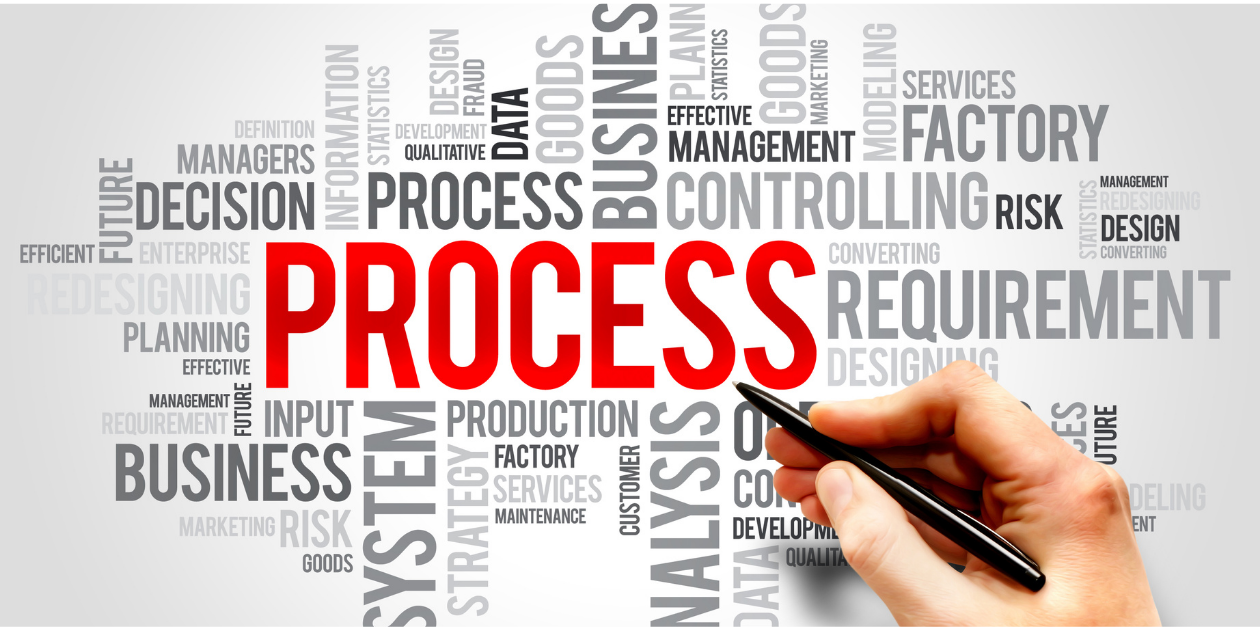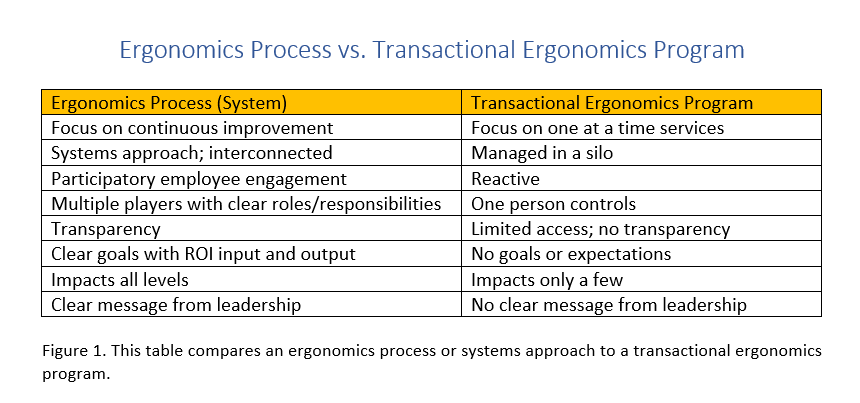
Are you taking a transactional approach to ergonomics?
Let me explain.
Many employers take a transactional approach to their ergonomics program, buying ergonomics services as needed in reaction to a situation or employee concern. It is the most common way employers consume ergonomics.
But is it the most effective or efficient way?
Silo Management
When ergonomics services are provided on a transactional basis, they are delivered in a silo, where one department isn't aware of the other department's activities, one department manager doesn't know the impact of another's needs or results. Information learned from actions taken by one isn't shared with others.
This is classic "silo management", where one department doesn't know what the other is doing or experiencing. I see this routinely between the Safety Manager and the HR Manager or Risk Manager. An example is when a work injury claim is filed but the Safety Manager is the last to know because it's a cumulative trauma, not an acute incident.
Another example is the Risk Manager doesn't share the loss run with those integral to reducing risk, like safety, facilities, and HR. The reports can be crafted to provide the right content to contribute to the ergonomics process without compromising medical privacy while providing critical root cause information to respond effectively. Yet, in a transactional program, these individuals are blinded to the internal "health" of the organization.
Another common example of silo decision making in a transactional ergonomics program is when the Purchasing or Facilities Manager selects chairs, sit to stand desks, or desk converters without any input from the Safety Manager or other internal person who has knowledge in ergonomics. The products arrive, are installed, and fail to fit many employees erupting in a surge of complaints, discomfort or even injuries.
These problems often happen because only one person is responding to the ergonomic concerns in your organization or too many without alignment. There are no clear goals or expectations on the outcome of the ergonomics transaction. There is no decision tree or process in place, no clear roles, and responsibilities, or communication expectations.
This type of transactional program provides no clear message to employees and has limited benefits to your organization, only impacting a few. Such as the employee who is lucky enough to have an ergonomic evaluation. More importantly, this type of program does not comply with Cal-OSHA 5110 or other recommended state and national ergonomics guidelines.
There is a better way!
Systems Approach
To experience deeper, more profound results that will impact your organization's success and your employees' health, safety, and performance significantly by claim avoidance, prevention, and well-being, then look to implementing a systems approach to your ergonomics process.
A concerted effort to implement a systems approach will reduce your ergonomic-related claims, improve employee well-being, and improve organizational performance.
When organizations integrate ergonomics as a system, to impact day-to-day operations, not on a limited as needed basis there are many significant benefits achieved. A process approach has far more value, engagement at multiple levels, and measurable outcomes than a transactional program giving organizations substantial benefits.
I've studied the differences over the last 3 decades! An effectively designed ergonomics process yields important results every small to mid-size organization can benefit from. In a long-term prospective study of an ergonomics process, results show not only 95% claim avoidance in a high-risk organization, but a return-on-investment savings of $10.00 for every $1.00 invested in the ergonomics process along with other important psychosocial and organizational benefits.
A systematic approach to ergonomics works best when you have an organization between 300-5000 employees. It can be a local, regional, national, or multi-national company. To do so, you must have a solid path to success with the right tools and people in place.
Are you a leader in your organization responsible for employee health and well-being? You may want to move from transactional ergonomics services to an integrated systems approach as with an ergonomics process. If so, check below to see how well your current transactional approach is working by identifying the gaps in your program.
Learn more about becoming a Certified Ergonomics Process Leader here. Available only through Worksite International's Ergonomics Training Academy.


Comments